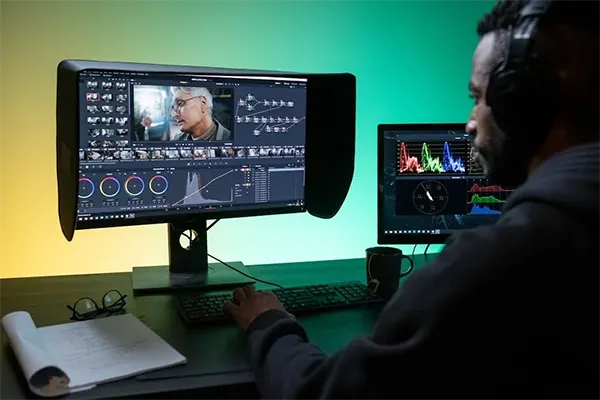
Video is one of the strongest ways to express thoughts and feelings about something. From short social media clips to big advertising projects, visual storytelling helps creators connect with audiences emotionally.
Further, the secret of a successful video is beyond the final message; it involves how the details are set together, polished, and shown. In this case, software is a basic thing, helping in adding special effects, modifying clips, and compressing files quickly.
However, not all tools have the same capabilities; some tools lack basic features like a video compressor. This is where you need to decide upon a fully functional tool. In this article, you will see how video editing tools can elevate your creative projects.
Hurry up and read this article till the end!
KEY TAKEAWAYS
- A video enables visual storytelling.
- Video editing software improves video quality and makes it attractive.
- You don’t need to be an expert to edit minor video clips.
Think of editing as an unspoken art, as it sets the rhythm and emotional tempo of a video. It makes raw material come to life as a story that engages your audience. Minor trimming, pacing, and adding transition effectors let an editor experience the moment.
A wedding video or documentary can be made more sentimental by employing slow cuts and low lighting, while a product commercial can be made more appealing by using quick cuts and lively music. The ability to narrate a story through editing differentiates amateur videos from professional ones.
Video communications with good storytelling and editing make people more engaged compared to written communications by more than 80%, just like Forbes illustrates through their visual marketing trends. That is a demonstration of how much editing matters in making messages memorable.
Good editing also involves getting pictures to look decent within your creative vision. Editing software enables the adjustment of brightness, saturation, contrast, and color balance, ensuring every shot appears even and visually pleasing.
The following are ways editing software helps improve visual quality:
Whether editing short movies, holiday blogs, or brand ads, these tools make it simple to produce images that are looked forward to amidst chaotic feeds on channels like YouTube or Instagram.
Sound is half the cost in video production. Even beautiful pictures can be a failure if there is no good sound. To get the most emotional impact, you can synchronize voiceover, sound effects, and background music using video editing software.
Relax, you can:
Sound design creates depth not only to images, but also to mood and rhythm. The most satisfying combination of sound and visuals makes for a more engaging viewing experience.
Editorial professional tools have moved to support collaboration between multiple creators. Cloud computing enables editors, designers, and marketers to collaborate on the same project at the same time, which streamlines collaboration.
Advantages of interactive editing today:
This way, video creation becomes easier, especially for remote teams or content creators who work on multiple projects.
File size, aspect ratio, and file format vary per video platform. Using editing tools, export plain videos in acceptable formats for YouTube, Instagram, TikTok, or LinkedIn
Some primary optimization features are:
For example, your finished file will be of high quality and still fit within social media platforms’ size restrictions if you use a trustworthy video compressor. This translates to quicker playbacks and happy viewers.
Professional video editing software gives the freedom to put creativity beyond imagination. Motion graphics, green screen, and animations provide creators with the ability to turn even the wildest imaginations into reality.
Some of the pro features that set aside projects are as follows:
To produce top-quality movie videos without any need to invest in expensive studio equipment, these qualities make it possible for professionals and amateurs.
Video editing is no longer an activity exclusive to the professionals—it’s now possible for anyone to become an expert with the right tools and right practice. It becomes achievable to transform mediocre footage into mesmerizing content that enthralls your audience by combining storytelling, imagery, sound, and imagination.
Whether you’re creating videos for personal creativity, business expansion, or leisure, learning about the available tools like editors and compressors will give your work a polished and effective look. As technology improves, the creative avenues for expression continuously expand—in demonstrating that with the proper tools, there is no limit to your creativity.
Media, marketing, education, and almost every industry use video editing.
Not really, small edits can be done without a professional course. But yes, refined projects require a professional background.
Color correction, stabilization, and audio enhancement are some common video editing techniques.
A video tends to show emotions and expressions that make audiences feel connected.
